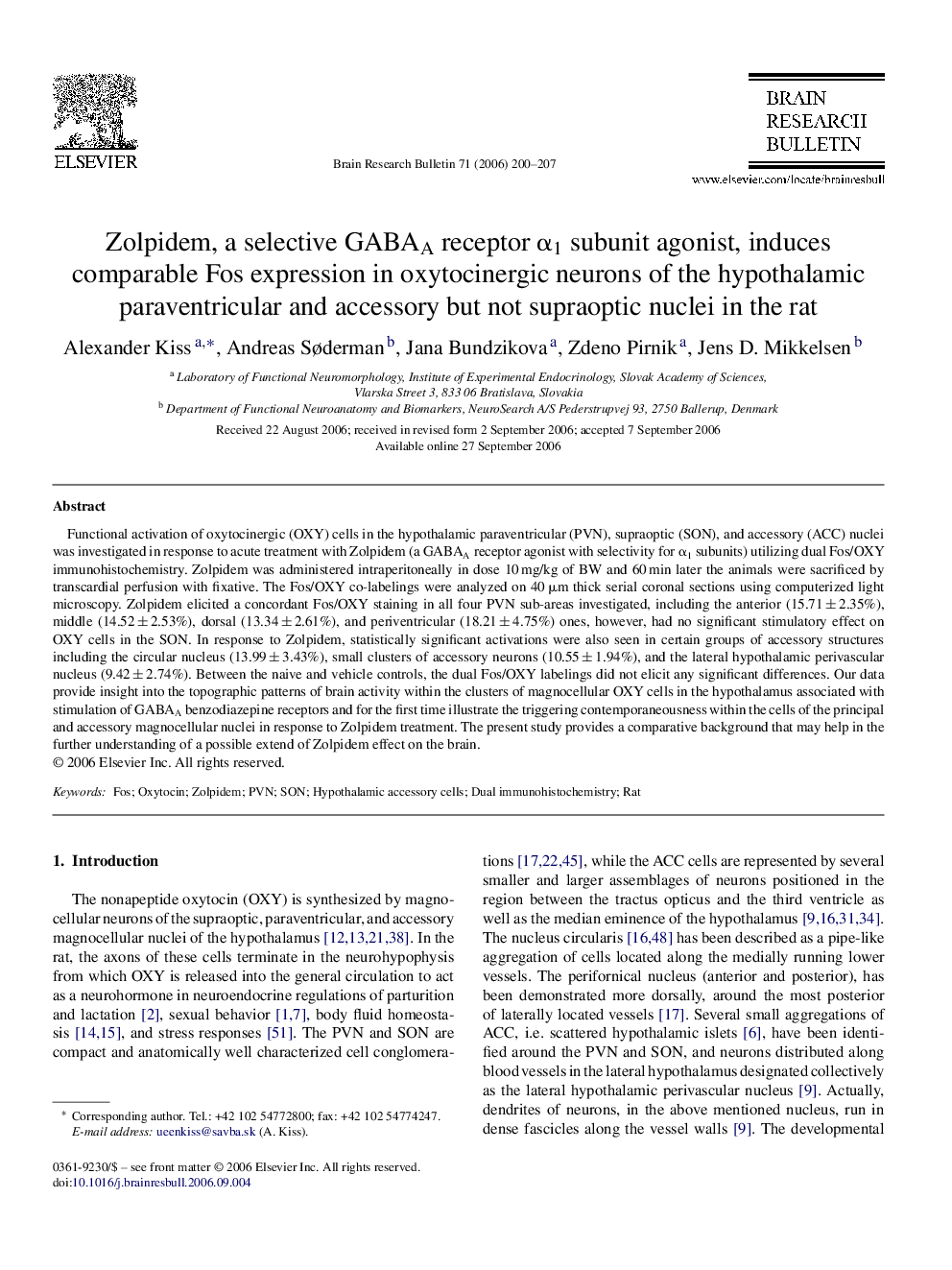| Article ID | Journal | Published Year | Pages | File Type |
|---|---|---|---|---|
| 4320233 | Brain Research Bulletin | 2006 | 8 Pages |
Functional activation of oxytocinergic (OXY) cells in the hypothalamic paraventricular (PVN), supraoptic (SON), and accessory (ACC) nuclei was investigated in response to acute treatment with Zolpidem (a GABAA receptor agonist with selectivity for α1 subunits) utilizing dual Fos/OXY immunohistochemistry. Zolpidem was administered intraperitoneally in dose 10 mg/kg of BW and 60 min later the animals were sacrificed by transcardial perfusion with fixative. The Fos/OXY co-labelings were analyzed on 40 μm thick serial coronal sections using computerized light microscopy. Zolpidem elicited a concordant Fos/OXY staining in all four PVN sub-areas investigated, including the anterior (15.71 ± 2.35%), middle (14.52 ± 2.53%), dorsal (13.34 ± 2.61%), and periventricular (18.21 ± 4.75%) ones, however, had no significant stimulatory effect on OXY cells in the SON. In response to Zolpidem, statistically significant activations were also seen in certain groups of accessory structures including the circular nucleus (13.99 ± 3.43%), small clusters of accessory neurons (10.55 ± 1.94%), and the lateral hypothalamic perivascular nucleus (9.42 ± 2.74%). Between the naive and vehicle controls, the dual Fos/OXY labelings did not elicit any significant differences. Our data provide insight into the topographic patterns of brain activity within the clusters of magnocellular OXY cells in the hypothalamus associated with stimulation of GABAA benzodiazepine receptors and for the first time illustrate the triggering contemporaneousness within the cells of the principal and accessory magnocellular nuclei in response to Zolpidem treatment. The present study provides a comparative background that may help in the further understanding of a possible extend of Zolpidem effect on the brain.
